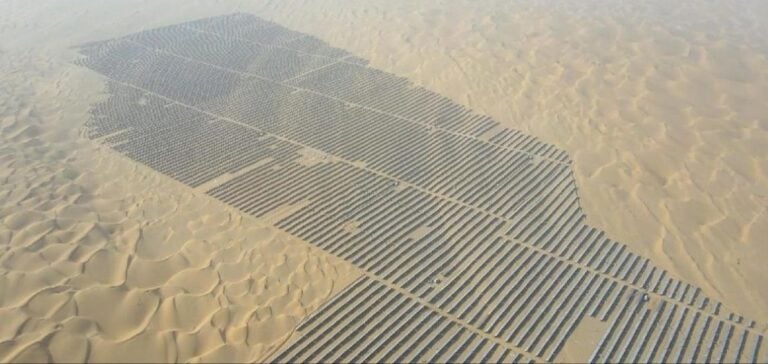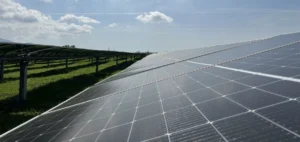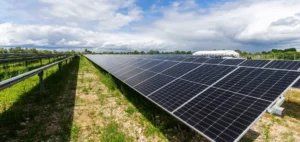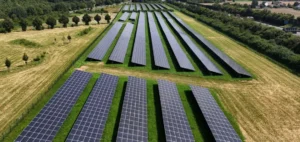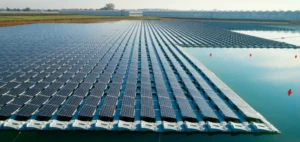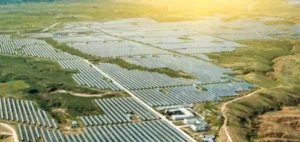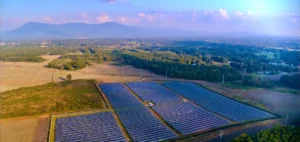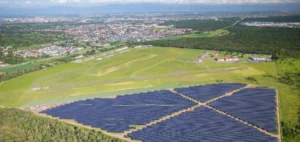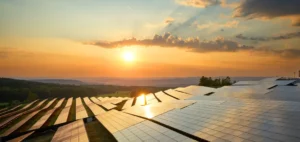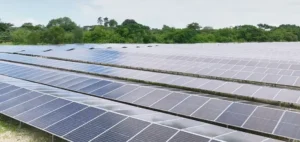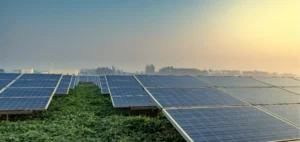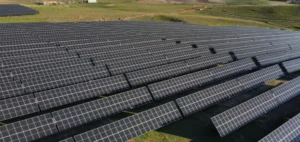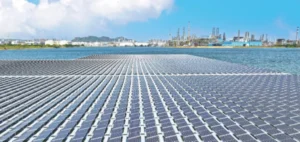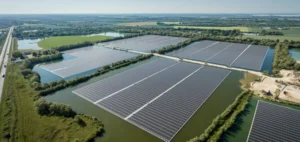Huasun Energy delivers 1.8 gigawatts (GW) of heterojunction solar modules (HJT) in a record time of three months, for China Green Development Investment Group’s (CGDG) 4 GW project in Ruoqiang, in China’s Xinjiang region.
This rapid deployment underlines the growing popularity of HJT technology for large-scale photovoltaic installations.
The modules supplied are designed for harsh climatic conditions, thanks to features such as UV protection film and edge sealing.
The bifaciality and high conversion efficiency of the modules maximize energy yields in this desert region.
The Ruoqiang project, located on the edge of the Taklamakan desert, covers some 9,688 acres.
In addition to generating electricity, it helps regulate ground temperature and humidity, important elements in this environmental context.
The modules, installed at a height of 3 metres, increase soil moisture retention by 30-60%.
These elements demonstrate the integration of advanced solar technology into large-scale projects in China, responding to the country’s need for energy diversification.
Industrial strategies and logistics efficiency
Huasun’s production capacity of 20 GW was a key factor in meeting the delivery deadlines for the Ruoqiang project.
The company’s Himalaya G12-132 model, used here, illustrates the efficiency of its supply chain and its rapid response to the growing demand for high-tech solar solutions.
The choice of HJT modules is motivated by their ability to achieve the lowest possible discounted cost of energy (LCOE) in large-scale photovoltaic projects.
This makes the technology a competitive option against other solar solutions, offering higher yields and greater sustainability.
Huasun’s international successes, with deliveries to over 40 countries, including 650 MW for INERCOM in Bulgaria, demonstrate its ability to adapt its offerings to local requirements while maintaining high quality standards.
Worldwide demand for HJT modules is part of a dynamic of increasing investment in technologies that optimize production and reduce operating costs.
Implications for the renewable energy market
The increasing use of HJT technology by major players in the renewable energy sector illustrates a move towards more energy-efficient solutions.
Huasun’s deployment strategy shows how solar module manufacturers must adapt to logistical and technological challenges to remain competitive.
HJT modules, with their specific characteristics and increased efficiency, are beginning to establish themselves as a standard for projects where LCOE optimization is crucial.
Growing interest in this technology in China and elsewhere could influence long-term investment trends in renewable energies.
The Ruoqiang project, in particular, offers a glimpse of future projects aiming for similar or higher capacities.
It highlights the importance of rapid production and efficient logistics, which are crucial to meeting increasingly strong and diversified energy demand.

